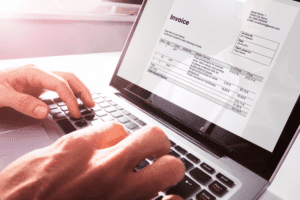Content

The second is the deferral entry, which is used to defer a revenue or expense that has been recorded, but which has not yet been earned or used. The final type is the estimate, which is used to estimate the amount of a reserve, such as the allowance for doubtful accounts or the inventory obsolescence reserve. Accrue means “to grow over time” or “accumulate.” Accruals https://www.bookstime.com/tax-rates/california are adjusting entries that record transactions in progress that otherwise would not be recorded because they are not yet complete. Because they are still in progress, but no journal entry has been made yet. Adjusting entries are made to ensure that the part that has occurred during a particular month appears on that same month’s financial statements.
- For deferred revenue, the cash received is usually reported with an unearned revenue account.
- The total of the subsidiary ledger must always agree with the general ledger account balance because both ledgers are just two ways of looking at the same thing.
- In the accounting cycle, adjusting entries are made prior to preparing a trial balance and generating financial statements.
- If you receive payment in advance for services that have not yet been performed, the payment must be posted as deferred revenue, with a monthly journal entry necessary until the prepaid revenue has been earned.
- In order to maintain accurate business financials, you or your bookkeeper will enter income and expenses as they are recognized in your business.
- Depreciation is always a fixed cost, and does not negatively affect your cash flow statement, but your balance sheet would show accumulated depreciation as a contra account under fixed assets.
- This can greatly improve a business’s chances of acquiring financing through conventional lenders (such as banks) by averting a situation whereby revenues seem lower than they actually are.
An adjusting journal entry involves an income statement account (revenue or expense) along with a balance sheet account (asset or liability). It typically relates to the balance sheet accounts for accumulated depreciation, allowance for doubtful accounts, accrued expenses, accrued income, prepaid expenses, deferred revenue, and unearned revenue. When doing your accounting journal entries, you are tracking how money moves in your business.
How to prepare your adjusting entries
Other times, the adjustments might have to be calculated for each period, and then your accountant will give you adjusting entries to make after the end of the accounting period. Your accountant will likely give you adjusting entries to be made on an annual basis, but your bookkeeper might make adjustments monthly. Once you complete your adjusting journal entries, remember to run an adjusted trial balance, which is used to create closing entries. Any time you purchase a big ticket item, you should also be recording accumulated depreciation and your monthly depreciation expense. Most small business owners choose straight-line depreciation to depreciate fixed assets since it’s the easiest method to track. Common prepaid expenses include rent and professional service payments made to accountants and attorneys, as well as service contracts.
However, if you make this entry, you need to let your tax preparer know about it so they can include the $1,200 you paid in December on your tax return. Remember, we are making these adjustments for management purposes, not for taxes. Most accruals will be posted automatically in the course of your accrual basis accounting. However, there are times — like when you have made a sale but haven’t billed for it yet at the end of the accounting period — when you would need to make an accrual entry. In order to maintain accurate business financials, you or your bookkeeper will enter income and expenses as they are recognized in your business.
Why Are Adjusting Journal Entries Important?
The $25,000 balance in Equipment is accurate, so no entry is needed in this account. As an asset account, the debit balance of $25,000 will carry over to the next accounting year. This principle only applies to the accrual basis of accounting, however.

Start at the top with the checking account balance or whatever is the first account on the trial balance. If it’s petty cash, then you should have a petty cash count at the end of the period adjusting entries examples that matches what is shown on the trial balance (which is the ledger balance). If they don’t, you have to do some research and find out which one is right, and then make a correction.
Credit and debit
Adjusting entries usually involve one or more balance sheet accounts and one or more accounts from your profit and loss statement. In other words, when you make an adjusting entry to your books, you are adjusting your income or expenses and either what your company owns (assets) or what it owes (liabilities). If you don’t make adjusting entries, your income and expenses won’t match up correctly. At the end of the accounting period, you may not be reporting expenses that happen in the previous month.

Then, in March, when you deliver your talk and actually earn the fee, move the money from deferred revenue to consulting revenue. In February, you record the money you’ll need to pay the contractor as an accrued expense, debiting your labor expenses account. If you have a bookkeeper, you don’t need to worry about making your own adjusting entries, or referring to them while preparing financial statements.
What Is the Purpose of Adjusting Journal Entries?
We don’t guarantee that our suggestions will work best for each individual or business, so consider your unique needs when choosing products and services. You rent a new space for your tote manufacturing business, and decide to pre-pay a year’s worth of rent in December. Now, when you record your payroll for Jan. 1, your Wages and Salaries expense won’t be overstated. A computer repair technician is able to save your data, but as of February 29 you have not yet received an invoice for his services. For instance, if a company buys a building that’s expected to last for 10 years for $20,000, that $20,000 will be expensed throughout the entirety of the 10 years, rather than when the building is purchased.